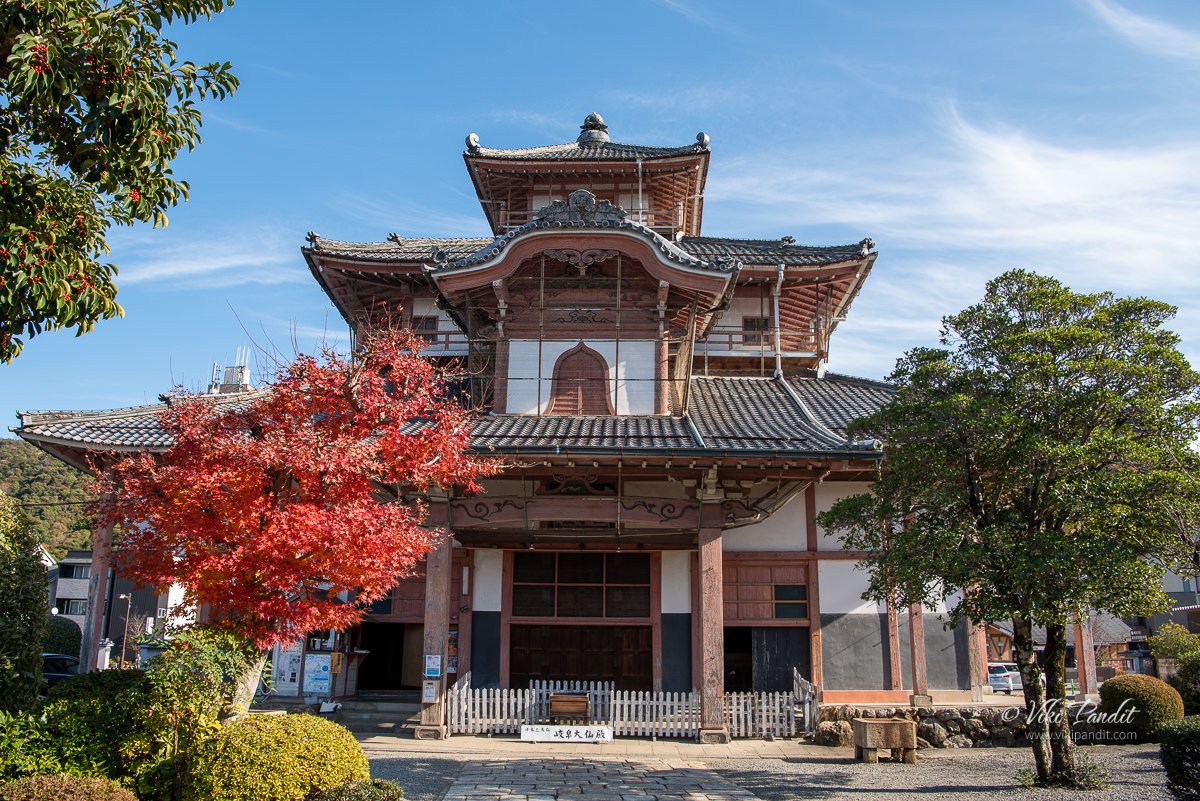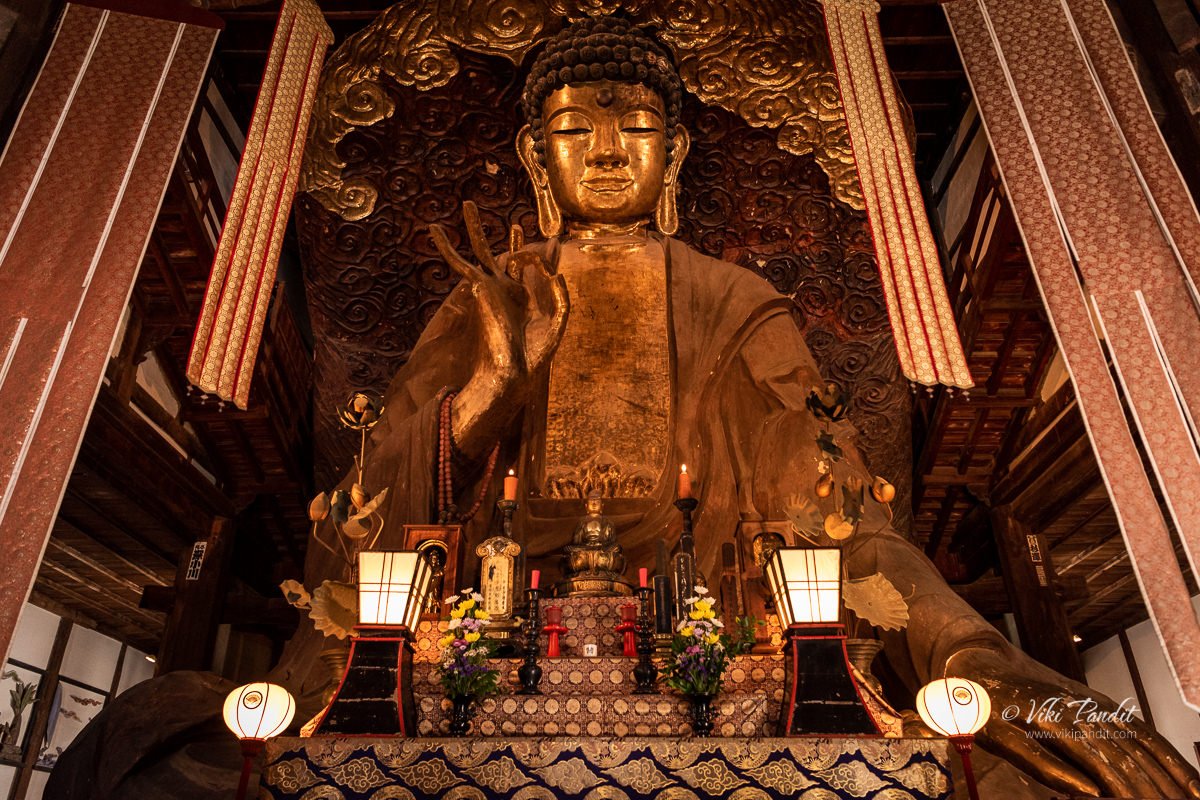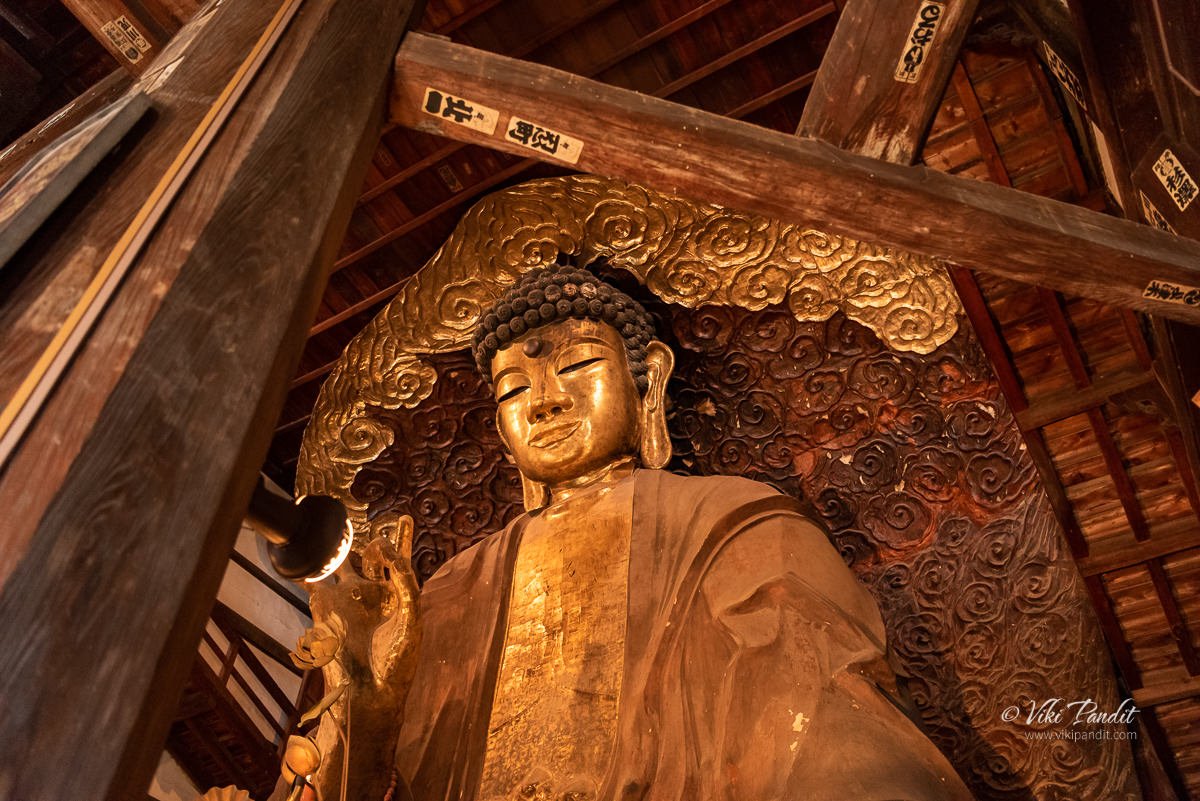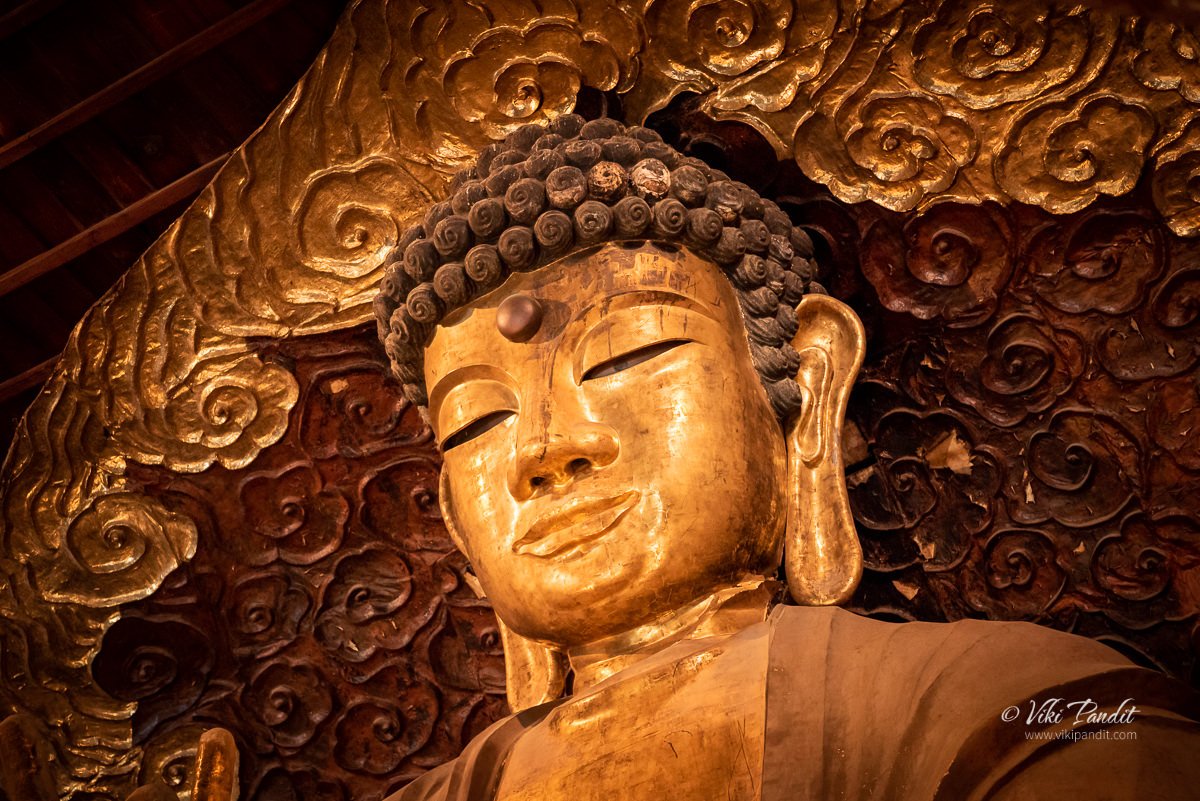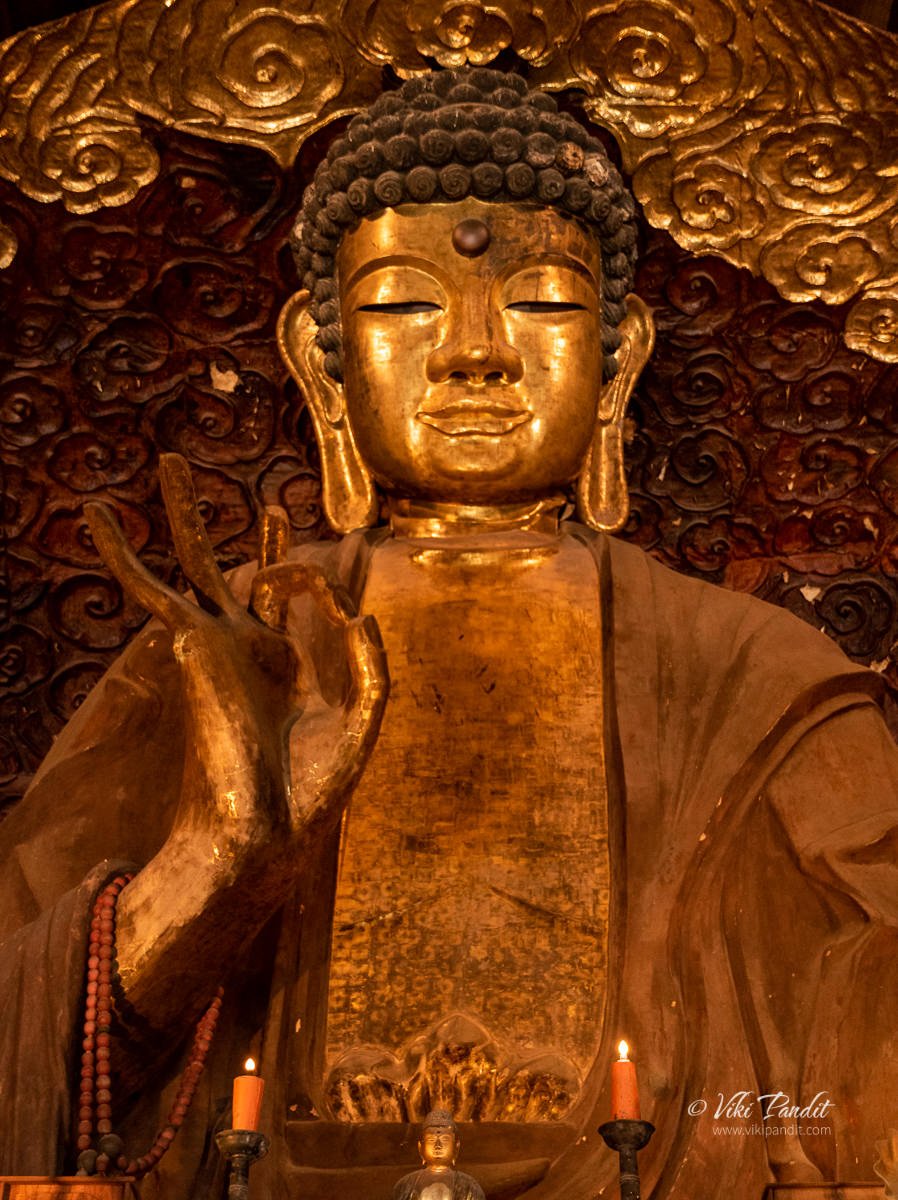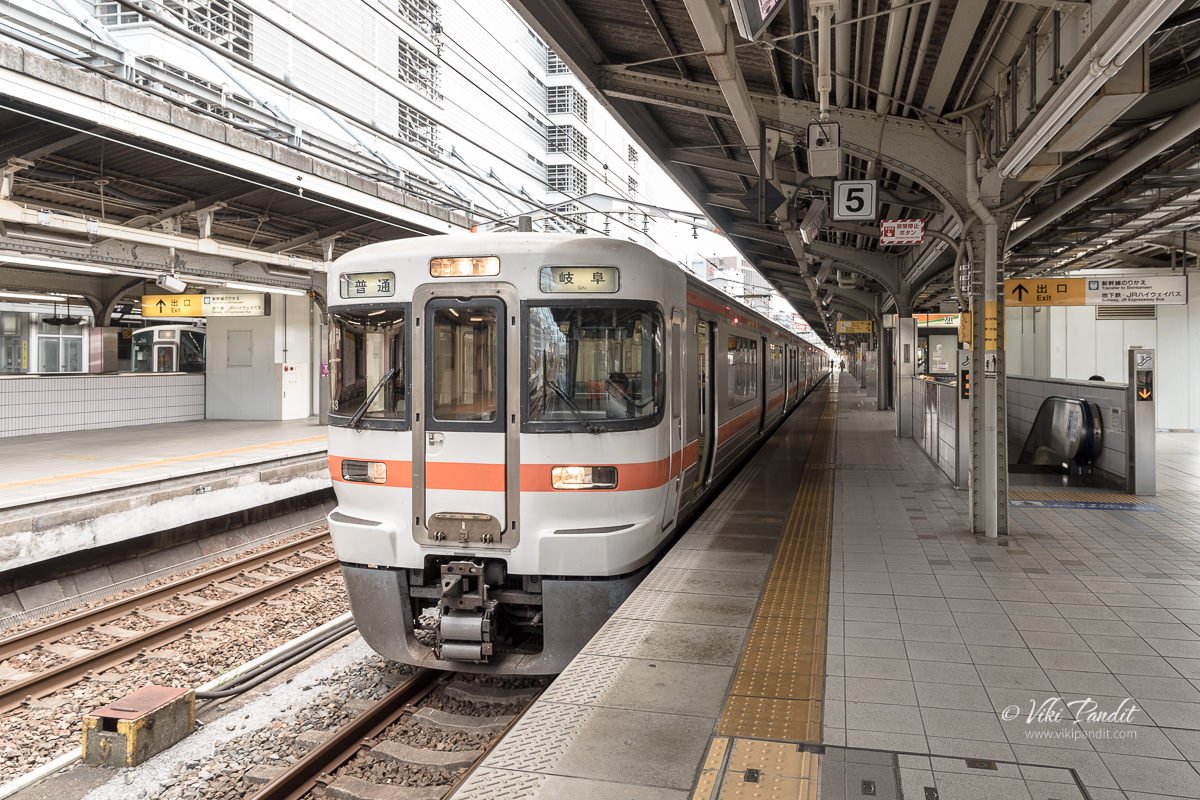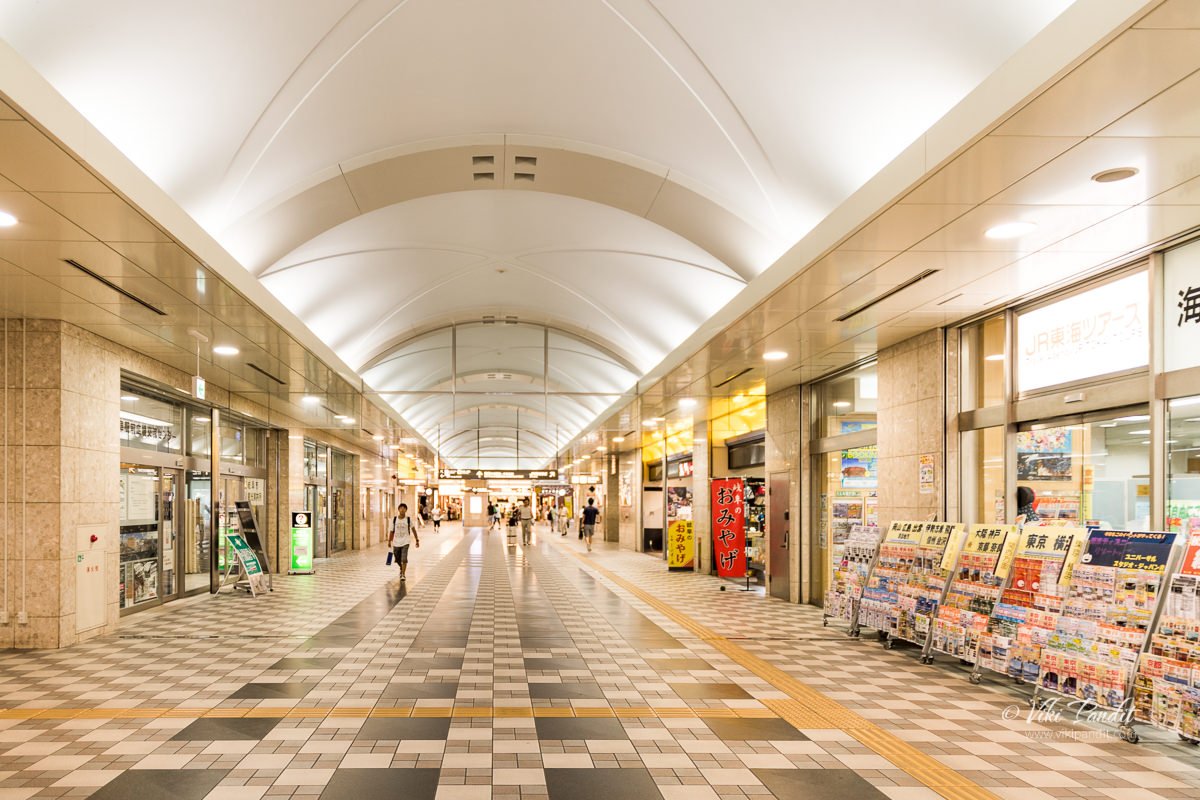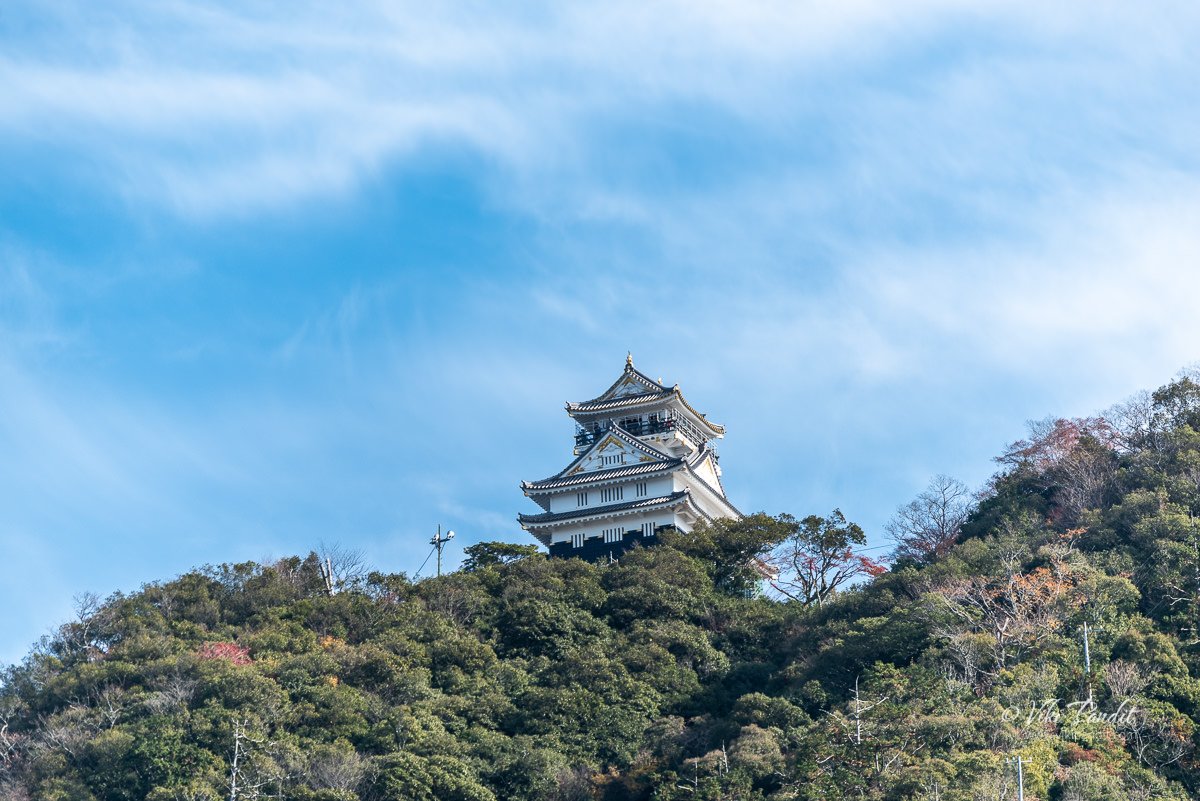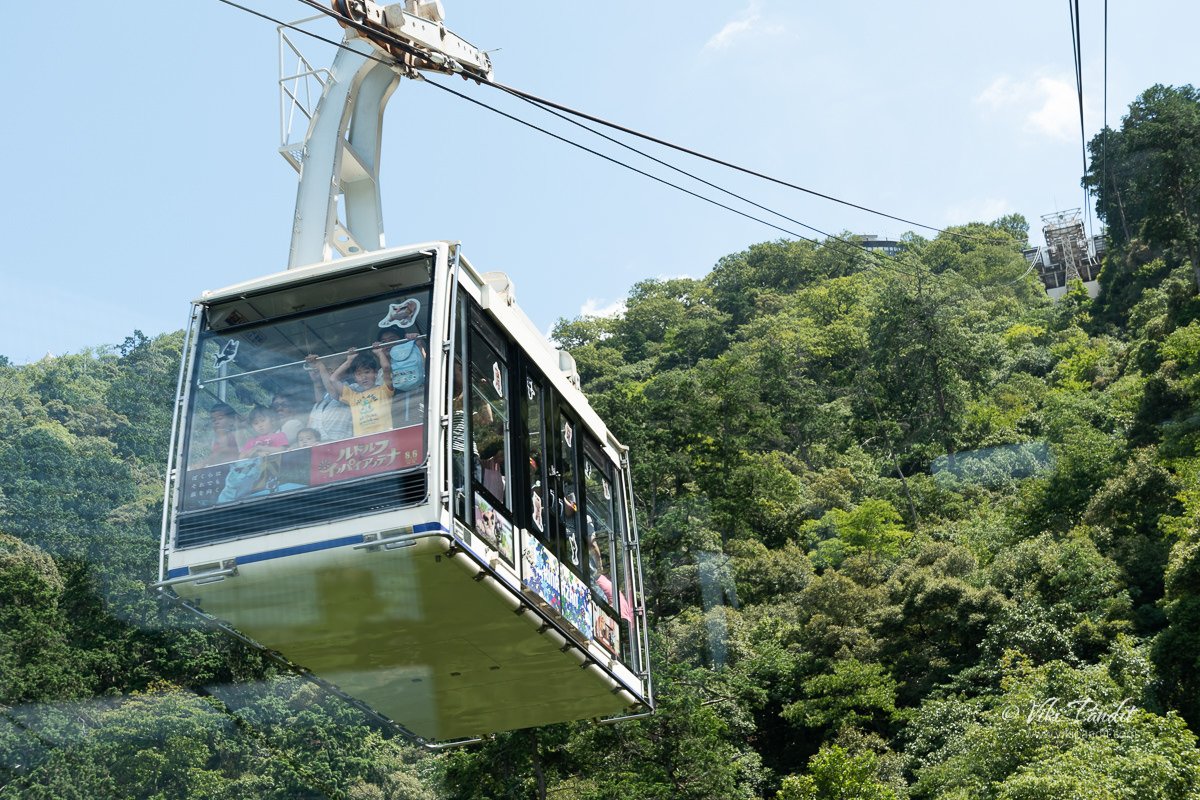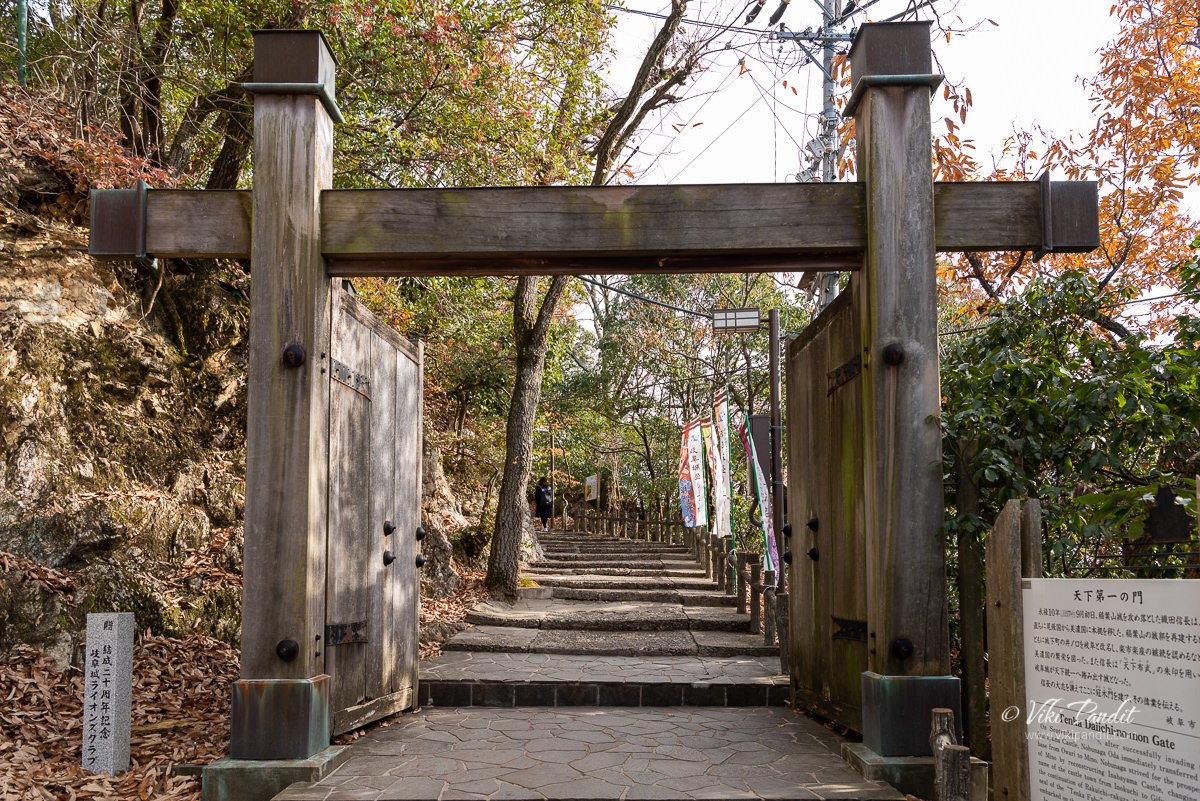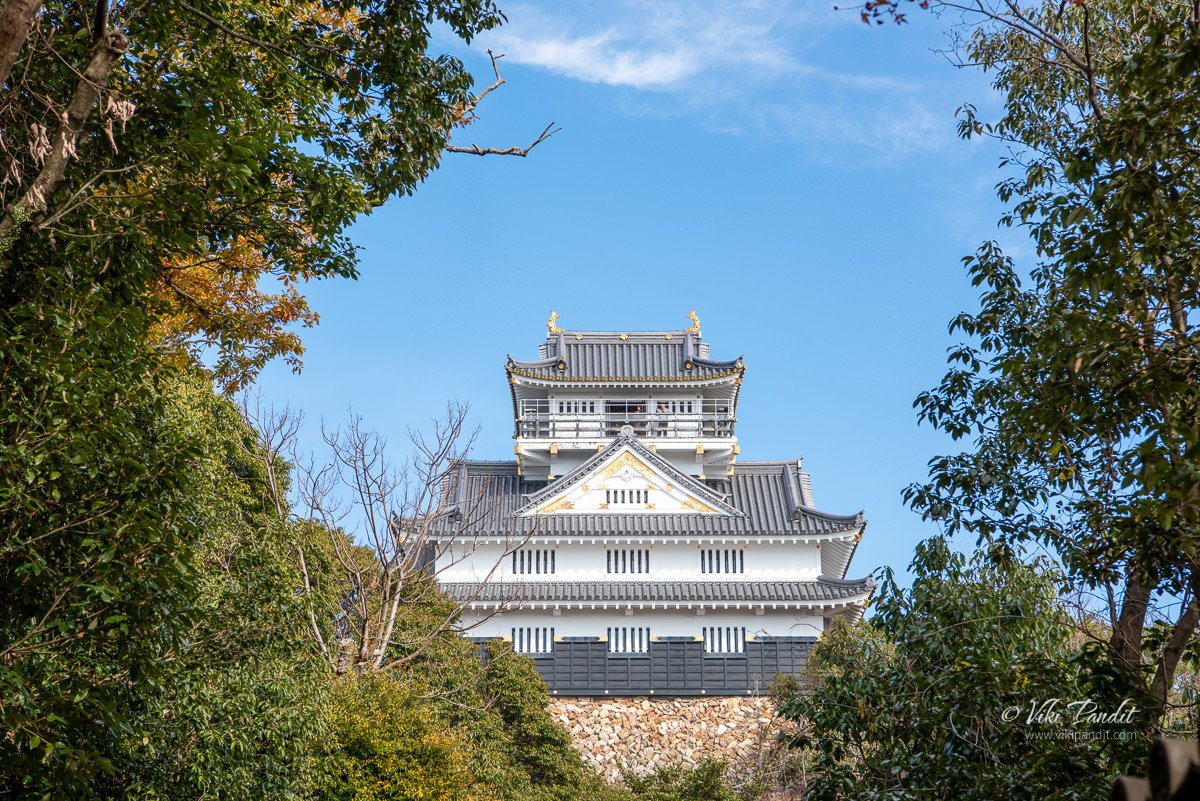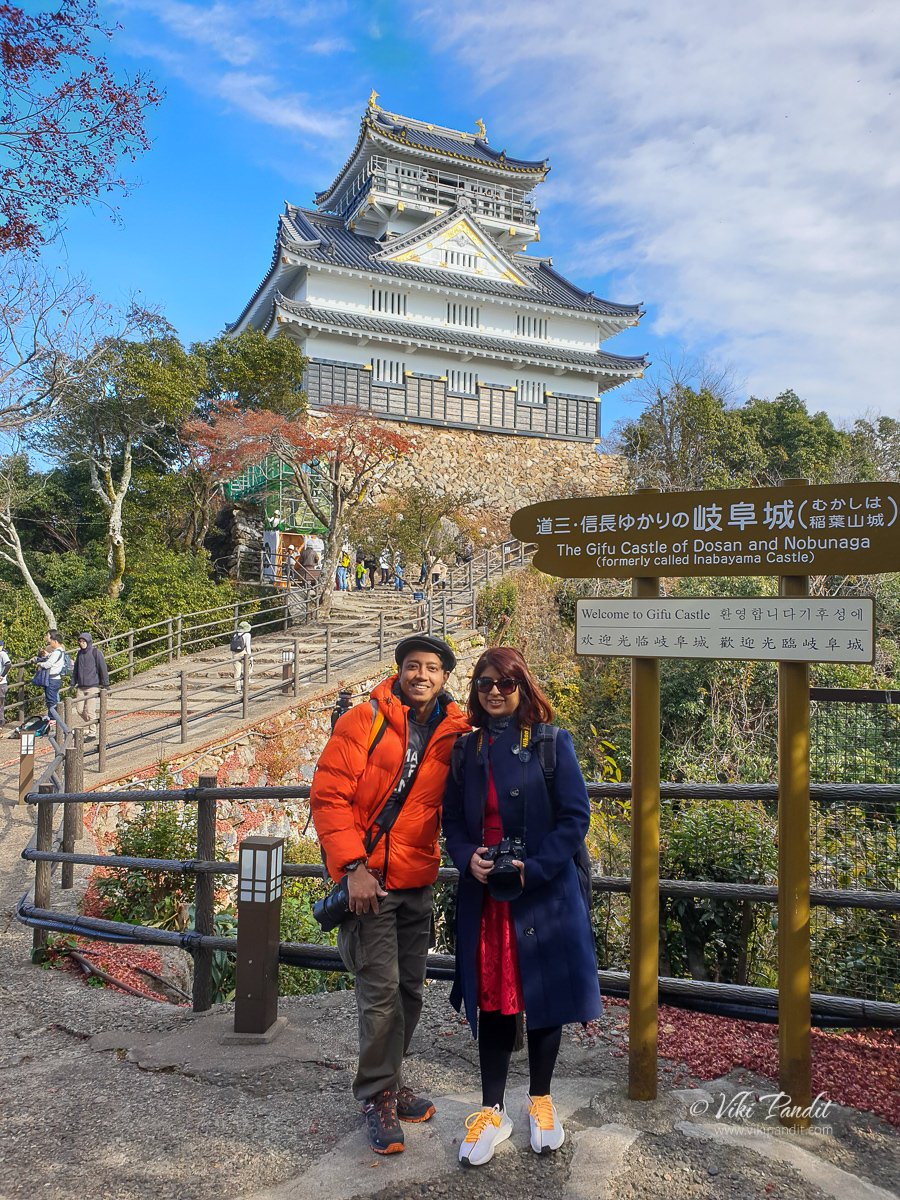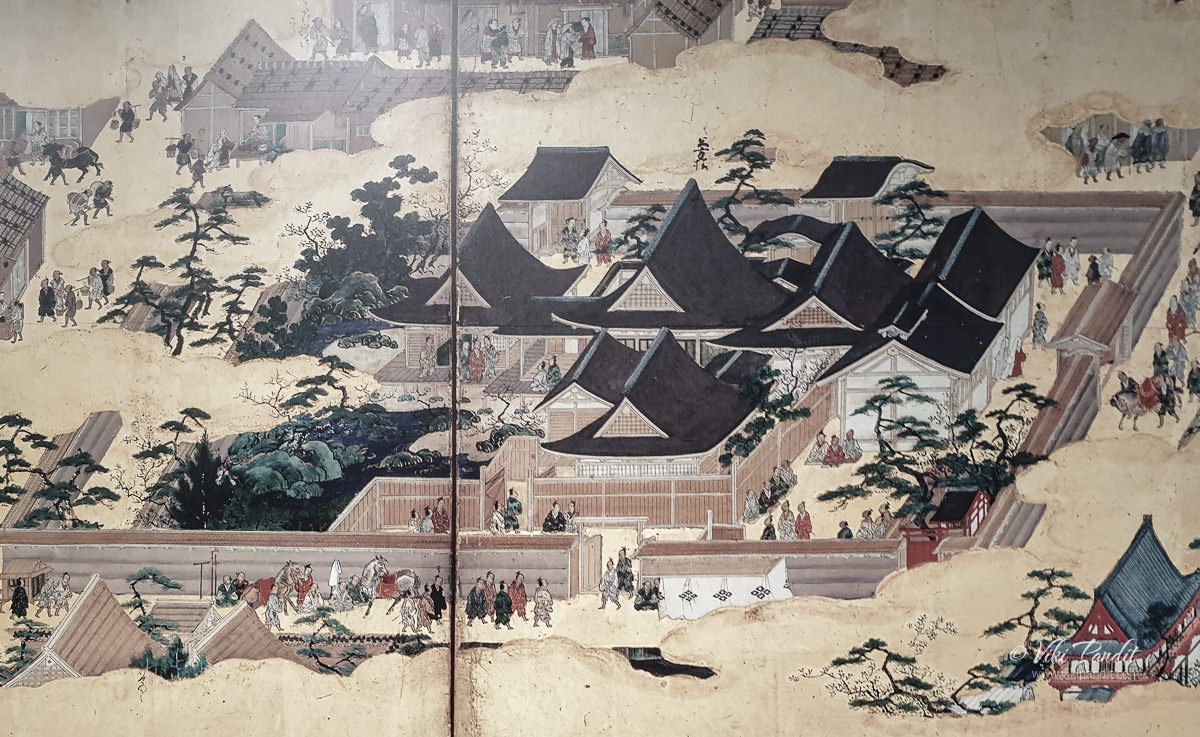After a beautiful morning at Gifu Castle we were ready to proceed to our next destination in Inuyama. But before we left the area, we dropped by to see the Shōhō-ji Temple – a rarely visited Buddhist temple near Gifu Park.
Shōhō-ji Temple
Shōhō-ji Temple lies at a 5-minute walk from Gifu Park. If you are already here visiting the Gifu Castle, you might as well take out a few minutes to explore this unique Golden Buddha created using dry lacquer.
For a building that houses a 13-meter high Daibutsu (Buddha), the temple building looks very innocuous from the outside. On a stone pillar near the entrance, the words “Nihon Sandai Daibutstu” (Japan’s Third Great Buddha) are engraved. It goes on to say that Gifu Buddha is regarded as one of the three great Buddha portrait statues in Japan along with Todai-ji in Nara prefecture and Koutoku-in in Kamakura.
The temple does not face the road. You have to walk around to the back. You can find the ticket booth on the left side of the entrance gate to the hall.
The admission fee for adults is ¥200. The lady at the counter also gave us a pamphlet in English, explaining various things about Shōhō-ji and the Daibutsu. This was my second visit to the peaceful temple and both times, the area was completely devoid of people.
Brief history of Gifu Buddha
As you enter the darkened room, it will take you a minute to adjust your eyes to the surroundings. To the left of the door lies a small bench, placed parallel to the wall. It is the best place to behold the powerful presence of the “Great Buddha”, with its imposing size and golden body, leaning forward over me with a comforting subtle smile. The statue’s kind and solemn expression combined with the calming nature of the temple in which it sits make for a soothing, comfortable atmosphere.
The Gifu Great Buddha (岐阜大仏, Gifu Daibutsu) in Shōhō-ji is one of the larger indoor Buddha statues that I have been privy to in all of Japan. It was conceived by the 11th head priest of Kinpouzan Shōhō temple, Ichyuu, around 1790 CE, in hopes of averting large earthquakes and famines in the area.
Pursuing this dream to erect a large image of Shaka Nyorai, he traveled far and wide collecting donations, most of the time on foot. Unfortunately, after spending 25 years working on the Great Buddha, he passed away in 1815 CE without seeing its completion.
With his predecessor in mind, Ichyuu’s successor, the 12th generation head Priest Kohshuu completed its erection 13 years later in 1832. Overall it took 38 years of construction to finish the Gifu Buddha.
The noble messenger of the Owari feudal clan attended the completion ceremony of this Great Buddha when it was commenced to the public in April 1832. The turnout for the completion ceremony was as grand as when the famous 16th-century ruler Oda Nobunaga gained control of Gifu and first moved into Gifu Castle. Sadly that grandeur is no more and the temple lies in a debilitated state.
The making of Gifu Buddha
The Great Buddha of Gifu is unique due to the method of its construction. Though most Daibutsu statues are made of metal, this statue was made using a technique called mokushin kanshitsu zukuri, where first a wood and bamboo “skeleton” is built, then paper or hemp cloth dipped in urushi (lacquer) are woven through the bamboo and allowed to dry before being guilt in gold.
Urushi is lacquer, made from plant extracts; when this sealant hardens it creates a water and acid-proof finish on the surface of the object.
The construction of the statue began with a central pillar, 1.8 meters in circumference, from a ginkgo tree. The Buddha’s shape was then formed using bamboo lattices. The bamboo was covered with clay to add shape and the statue was then covered entirely with Buddhist sutras. For this reason, this statue is also known as the “Kago Daibutsu” (the basket Daibutsu).
Finally, the scriptures were covered in lacquer and gold leaf, giving the Buddha the appearance that it has today. Because priests and many others prayed for people’s happiness by using Buddhist sutra scriptures, placing the many scriptures onto the body of the Great Buddha was very important in its construction.
However, a significantly large amount of Buddhist scriptures were necessary to completely cover all of the massive statue. Priest Ichyuu traveled by himself to collect sutras, asking for contributions all around Japan.
Gifu’s Great Buddha was eventually completed at 13.7 meters tall. It is now counted among Japan’s Three Great Buddha Statues and is the largest in Japan to be made of lacquer.
The Daibutsu is built leaning slightly forward, giving the impression that it’s trying to draw nearer to the worshipers who visit it. With its plump cheeks and almost closed eyes, the overall impression exuded by this Buddha is one of kindness.
This Daibutsu is characterized by a very long earlobe. The length of the ears is as long as 2.12 meters. Ear lobes longer than the chin are rare.
Daibutsu statues generally have their right hand opened, but the Gifu Daibutsu has its right hand tied with a fixed seal called “Seppoin“, which makes a ring with the middle finger and thumb, striking a pose that looks like an “OK” sign.
In the belly of the Great Buddha of Gifu, a statue of Yakushi Nyorai is enshrined.
On the right of the enormous image of Buddha lies the Binzuru-sama, the Buddha representing the concept of “mubyō-sokusai” (無病息災) or “being in a state of perfect health”. He is one of the most charming characters in Buddhism. His power to heal was matched by his love of drinking 😅.
It is believed that if there is a part of your body in poor health if you rub the corresponding part of this Buddha’s body, your illness or injury will be healed. But of course, be very careful when touching the statue.
Inside the Great Buddha Hall, about 108 statues of Rakan are lined up on the left and right walls so as to surround the Great Buddha. They are known as the Gohyakurakan – the disciples of the Buddha. Each statue has a unique expression, so it is said you can find at least one stone Buddha that resembles you, your parent, or a friend.
Originally there were more of these figures but many of the Gohyakurakan were severely damaged over the years by earthquakes and, as a result, the ones you see here are all that have survived.
The temple does not take long to explore so if you have the inclination for some non-flashy heritage places, this is a must-go. The temple might lack the charm of a Todai-ji or the fame of Kamakura, but it is an interesting place to enjoy history without the distraction of massive crowds.
Thanks for reading! Please leave me your comments or reviews. If you liked my story please consider following me on Instagram or continue with it as I visit the beautiful Inuyama Castle.
1832 CE
Ichyuu
¥200
9:00 – 17:00
